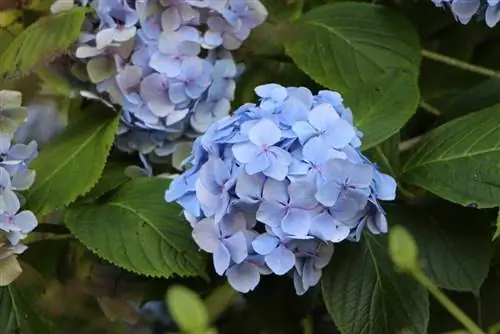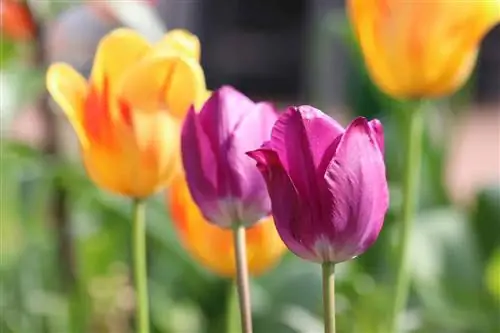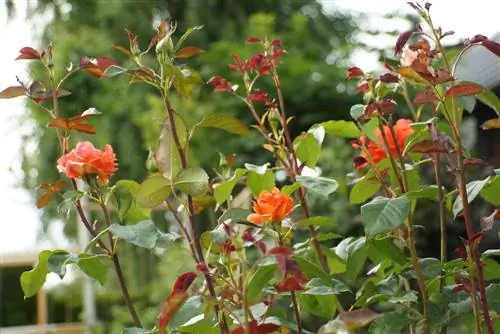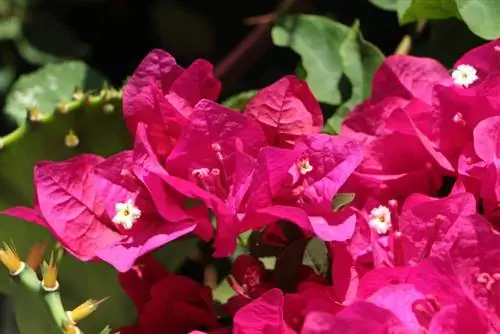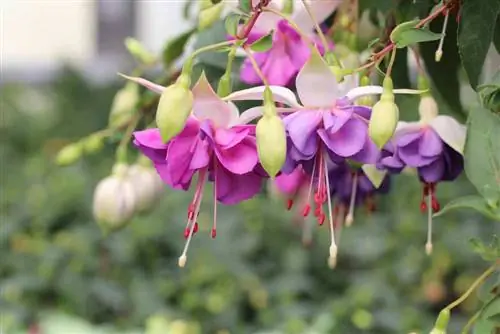- Author admin [email protected].
- Public 2023-12-17 03:39.
- Last modified 2025-01-24 12:45.
The hydrangea has the botanical name Hydrangea and, depending on the variety, grows either upright or as a climbing plant. As a summer-green flowering shrub, the plant transforms any garden into a romantic sea of flowers during its flowering period. Since the hydrangea also grows in shady conditions, it can also be used to beautifully decorate darker garden corners. The beginning and duration of the flowering period also depend on the variety.
Beginning of flowering
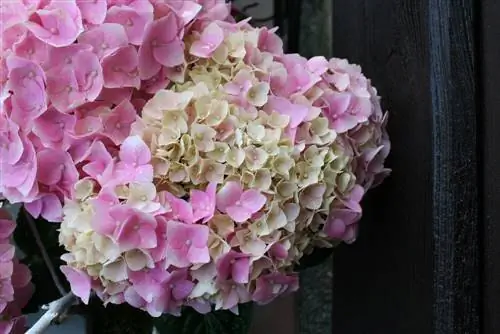
If hydrangeas feel comfortable in their location, the first flowers appear very early. Some varieties bloom in spring, while others only start blooming in summer. The start of the flowering period depends on care and site conditions. In addition, the condition of the soil, the weather, the incidence of light and the fertilizer application play an important role in flowering. If these factors are not optimal for the hydrangea, the flowering period may be delayed. In addition, the previous year's pruning of the hydrangea should not be too severe. Since the plant creates its flower buds for the next year after flowering, these must remain on the bush. Therefore, only the completely dry inflorescences and branches should be cut out.
- Start of flowering depends on the variety
- Early varieties start in May
- Most varieties start blooming in June
- Specimens grown in the greenhouse bloom earlier
- In high and cool mountain areas, flowering comes later
- In warmer regions the flowering period also starts earlier
- This includes, among other things, the wine-growing regions
- A suitable location with airy and partially shaded conditions is important
- Bright sun is not tolerated and negatively affects the flowering
- Late night frosts can destroy flower buds in spring
- Make sure you have adequate winter protection
Tip:
Alternatively, you can leave the dried flowers on the bush so that the inflorescences provide natural protection against cold winter temperatures. In this way the next flowering period is guaranteed.
Duration of flowering period
Hydrangeas bloom for a long time and profusely, so the shrubs transform the garden into a colorful floral paradise. Just like the beginning of the flowering period, the end also depends on many aspects. The better the site conditions and care are, the longer the flowering period lasts. To ensure that hydrangeas thrive and bloom for a long time, you must always ensure that they are supplied with sufficient water. If the hydrangea lets its leaves and flowers droop at midday on hot summer days, the plants urgently need additional watering. Otherwise flower formation may stop prematurely. Hydrangeas are also heavy feeders and have high nutrient requirements. That's why the plant depends on frequent and generous fertilizer applications in order to produce its beautiful flowers for a long time.
- All varieties bloom all summer long
- Many varieties bloom until autumn
- Generally, the flowering period of hydrangeas lasts until September
- Late flowering varieties even bloom until October
- Exotic varieties usually only bloom in the summer months
- Optimal care promotes flower formation
- Be sure to water and fertilize abundantly
- Use either rainwater or softened drinking water for watering
- Use special hydrangea fertilizer
- Alternatively, fertilizers for rhododendrons are possible
- Fertilize hydrangeas only until the end of July
Note:
If you want to provide your hydrangeas with an organic fertilizer during the flowering period, pellets made from cow dung are suitable. These natural fertilizers provide the flowering bushes with sufficient nutrients for an intensive flowering phase.
Inflorescences
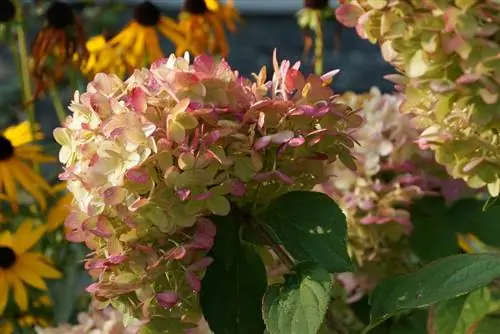
Hydrangeas are available in a wide range of flower colors from specialist retailers. It can also happen that the flowers change color. This is often due to a change in the pH value in the soil, which can occur depending on the year. Brightly blooming hydrangea varieties initially form green buds and then take on the actual flower color. As they fade, the inflorescences turn green again. On the other hand, darker flowers often turn brown-red when they fade. New varieties and hybrids surprise with unusual flower colors, some of which fade to a red shade in autumn. Flowering hydrangeas are available in early spring; these specimens are grown in greenhouses. Since the hydrangea is sensitive to frost, early planting outdoors is not ideal for the plant. For this reason, hydrangeas in full bloom are better off in the winter garden at the beginning of spring.
- Form large flower balls
- Blossoms slowly wither
- Common flower colors are pink, hot pink, red and white
- Blue color of the flowers is not natural
- Can be achieved by acidic soil and alum in irrigation water
- Keep early flowering specimens in the winter garden until the ice saints arrive
- Don't set it up there in the blazing sun either
- Slightly shaded space with good ventilation is ideal
- Do not cultivate hydrangeas in the winter garden all year round
- Need rest period in the winter months
- Need to stay cool for a while to form new flowers
Tip:
The decorative hydrangea flowers are ideal as cut flowers for the vase. However, you should pick them quite late in the flowering period, because only at this point have the petals developed a sufficient level of firmness.

